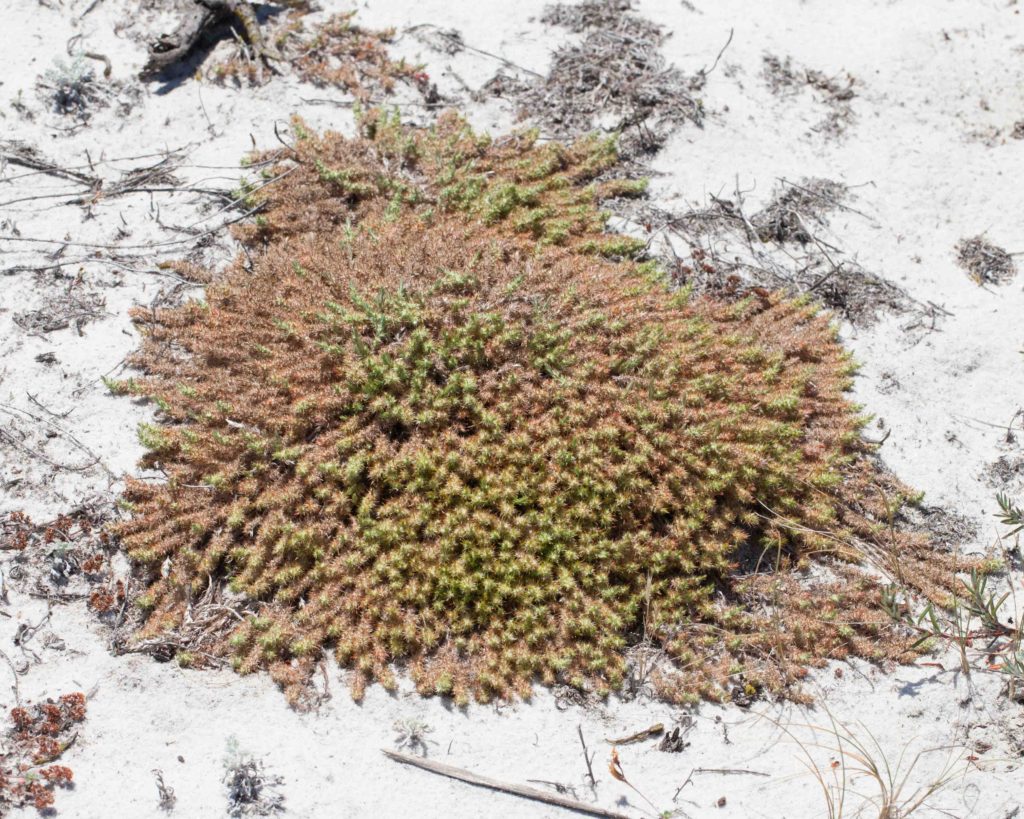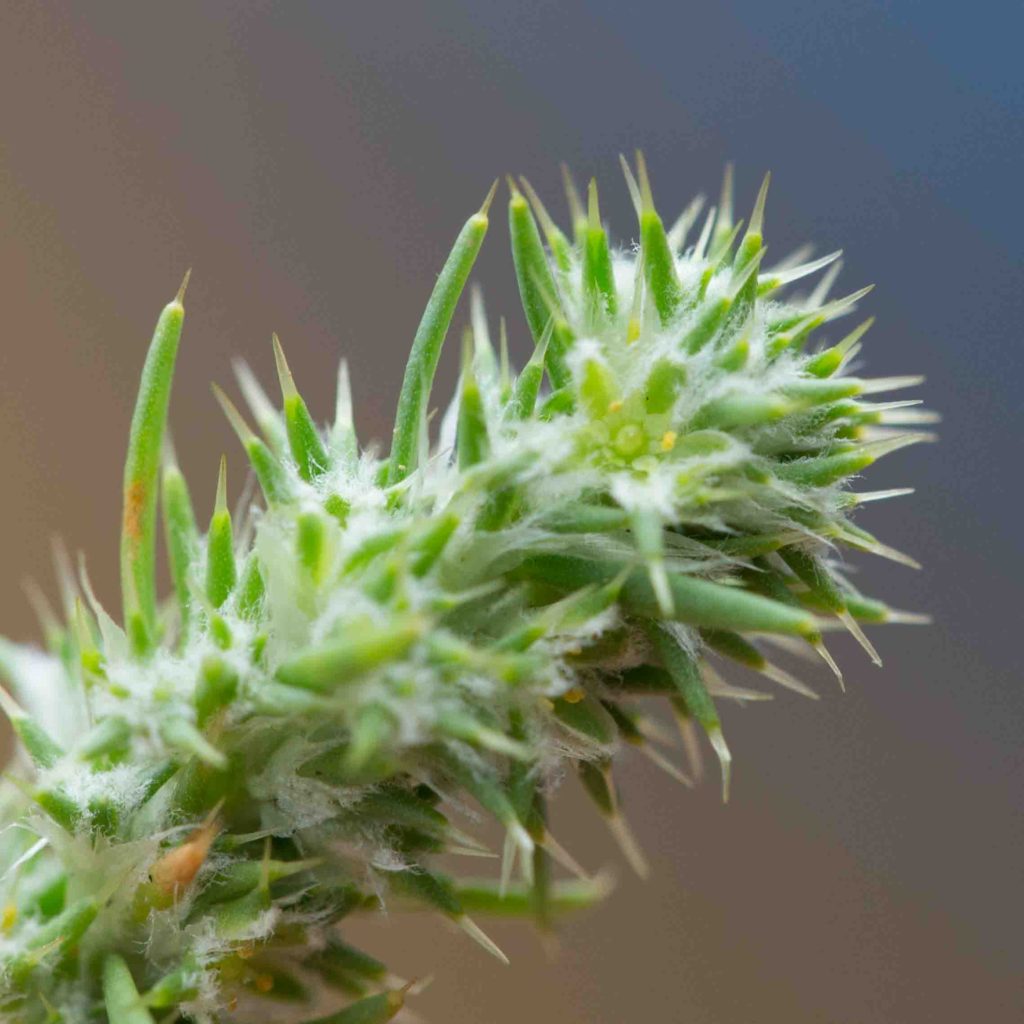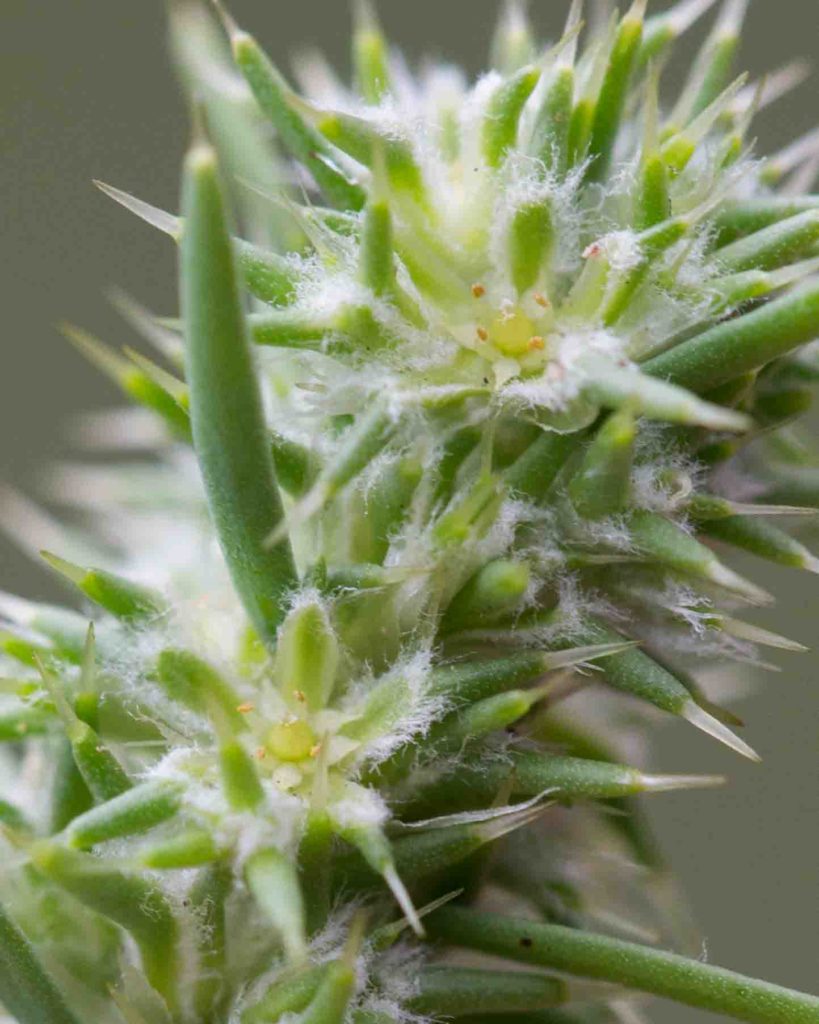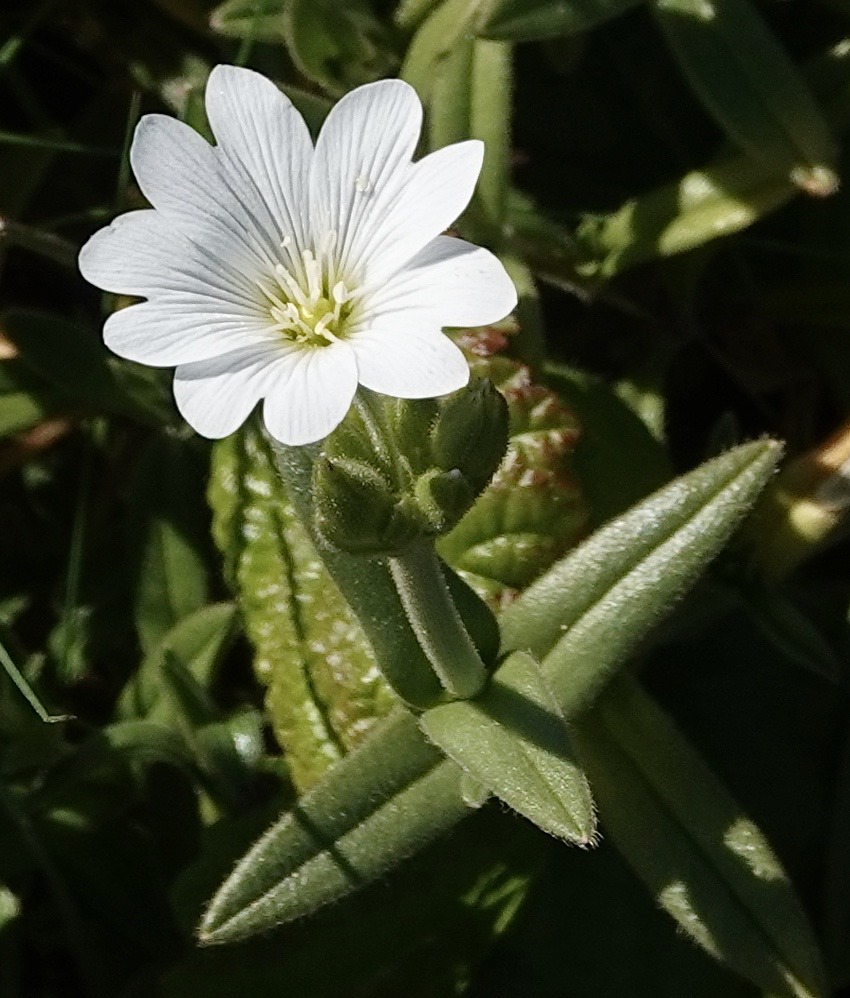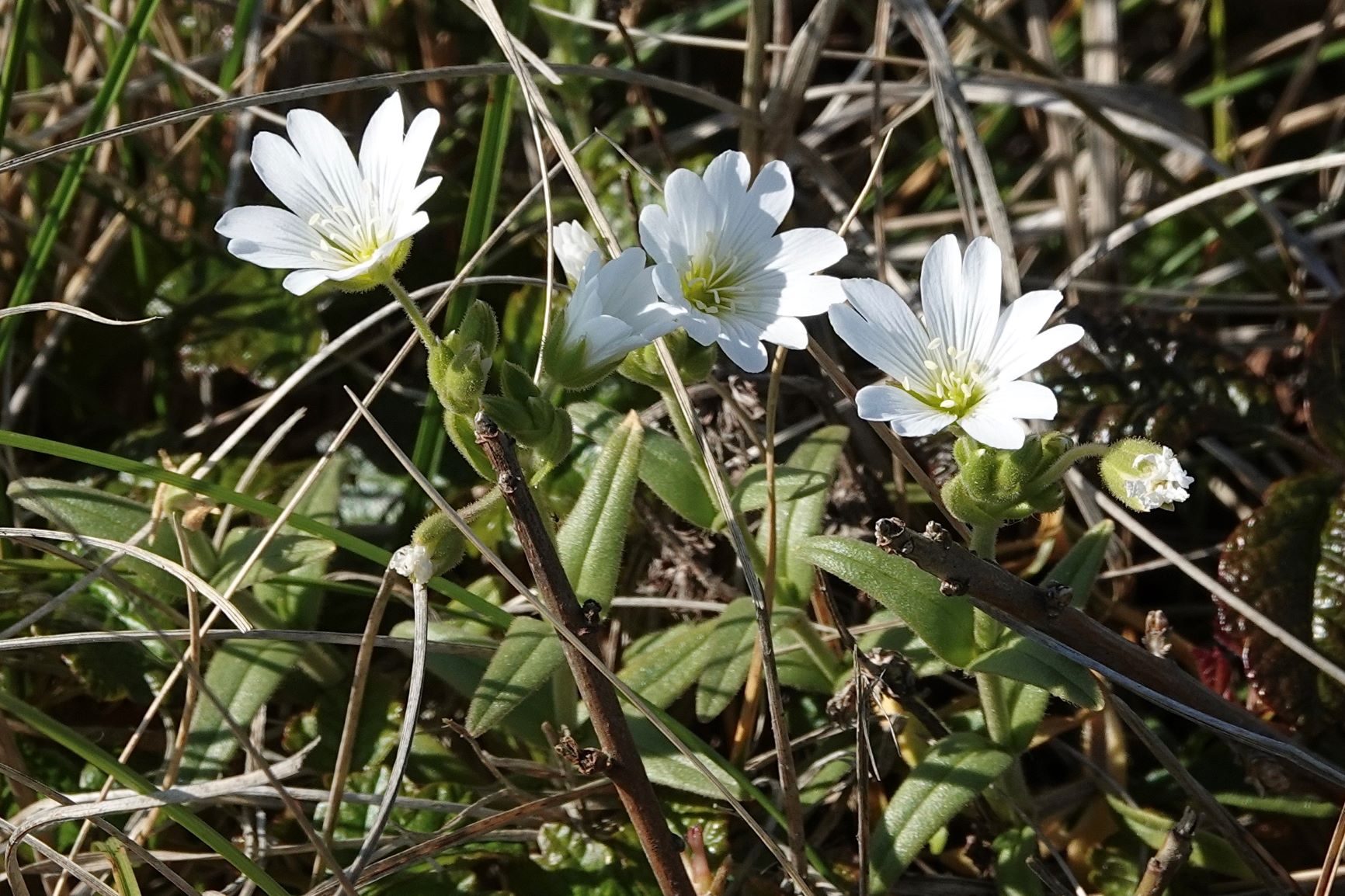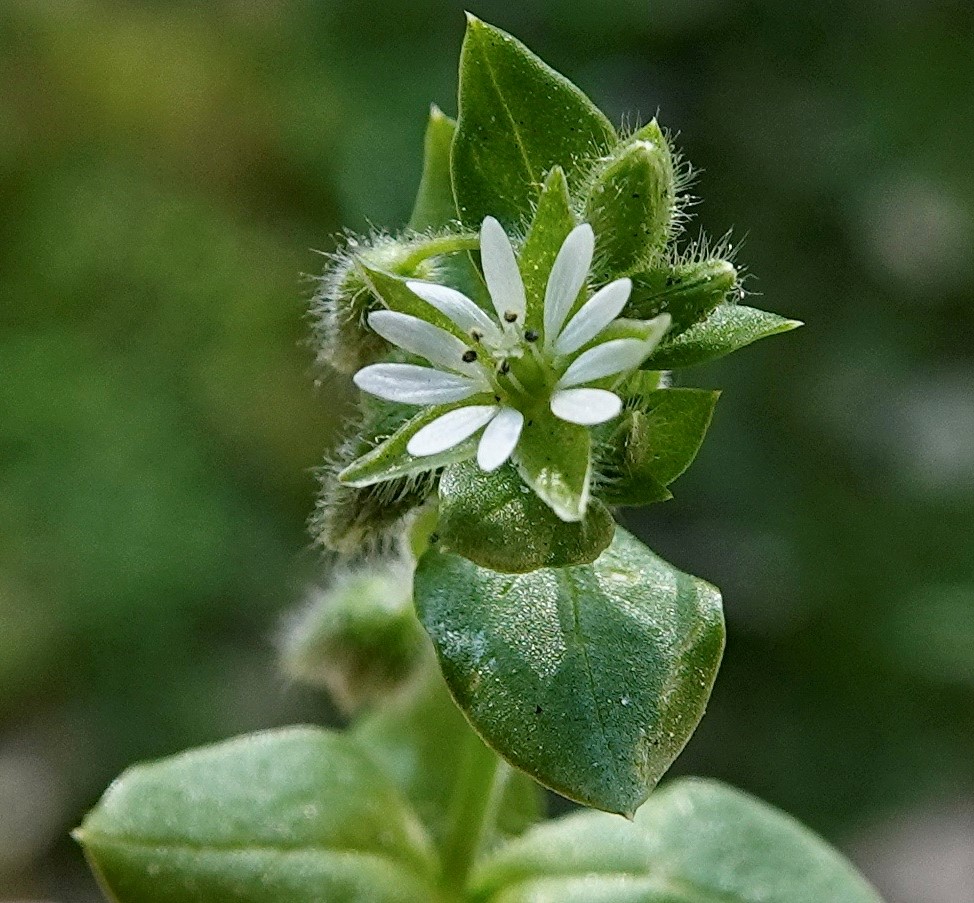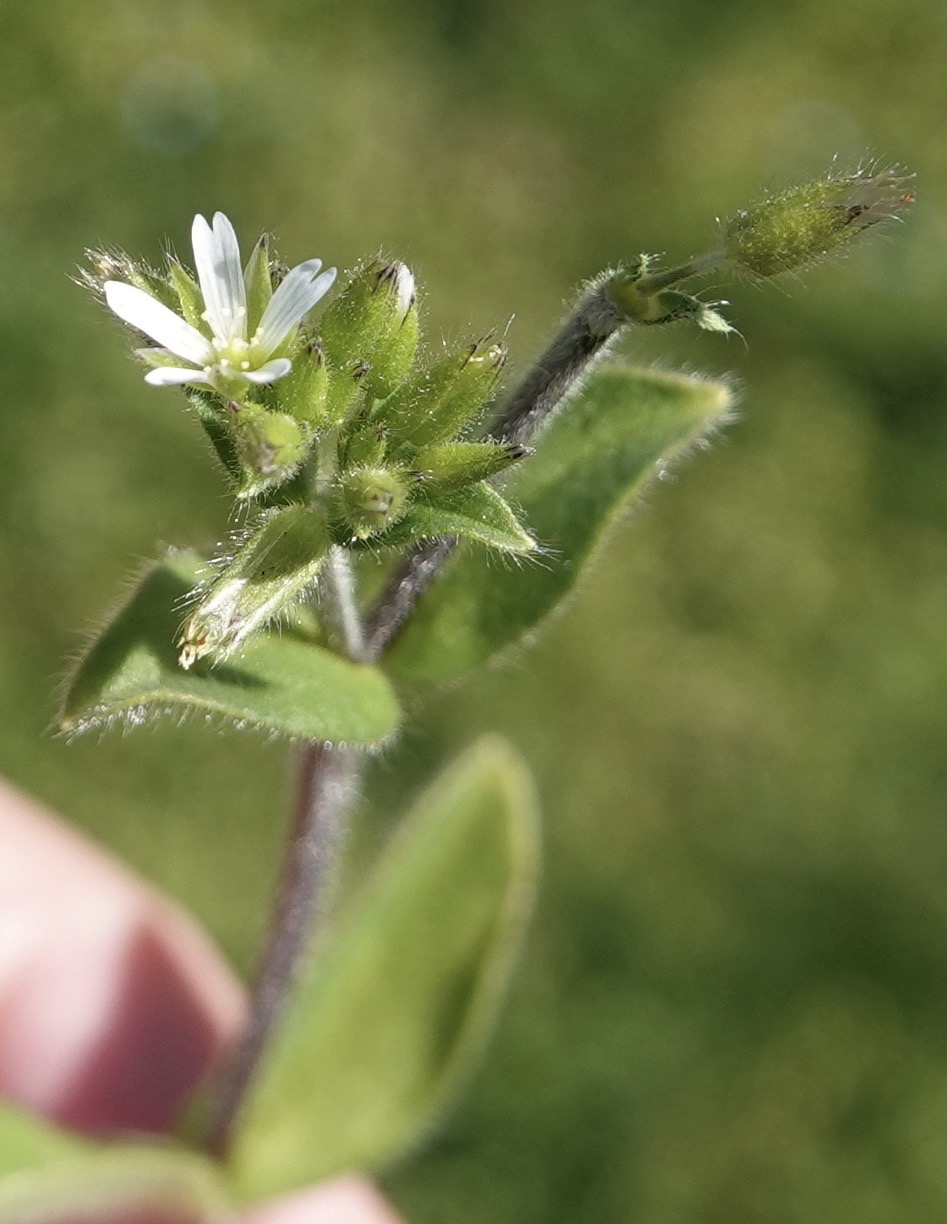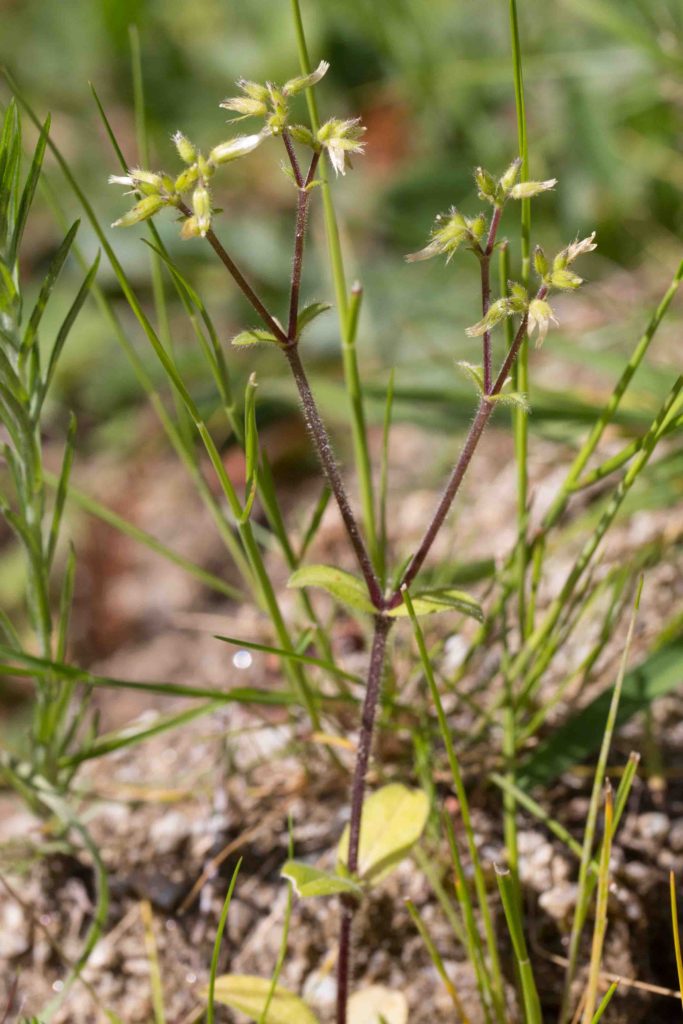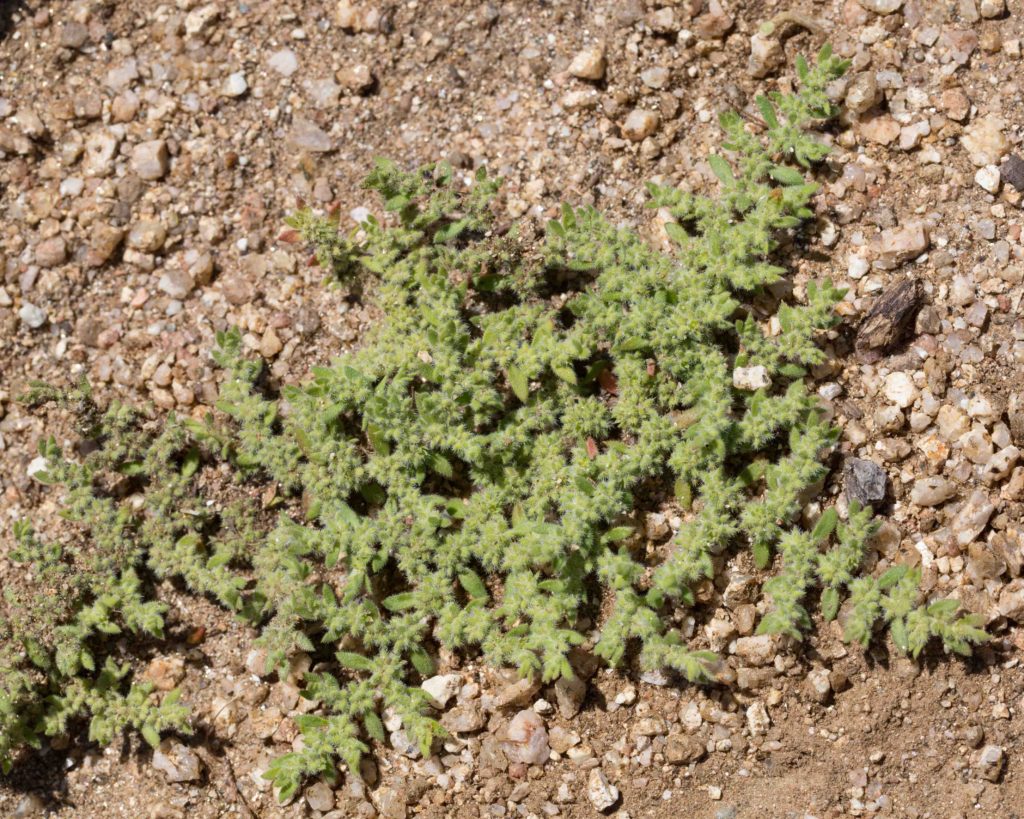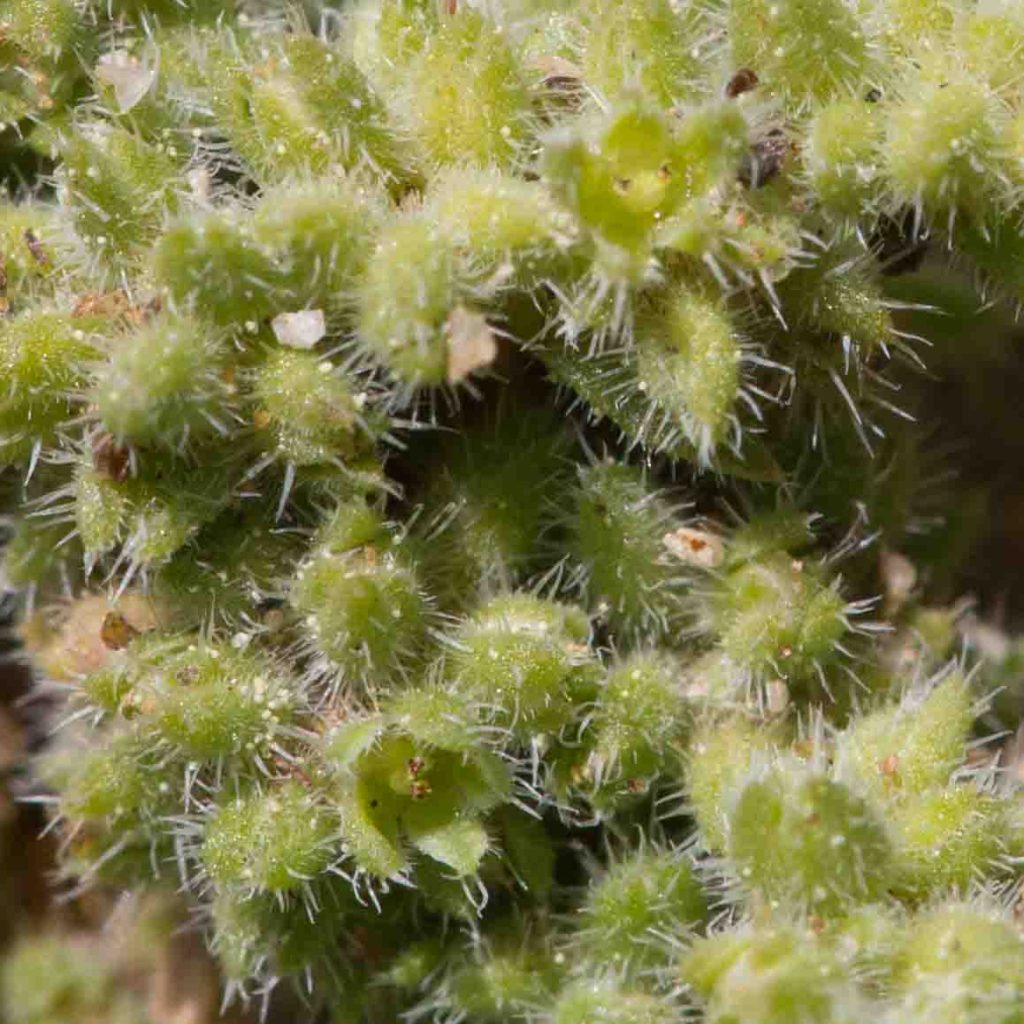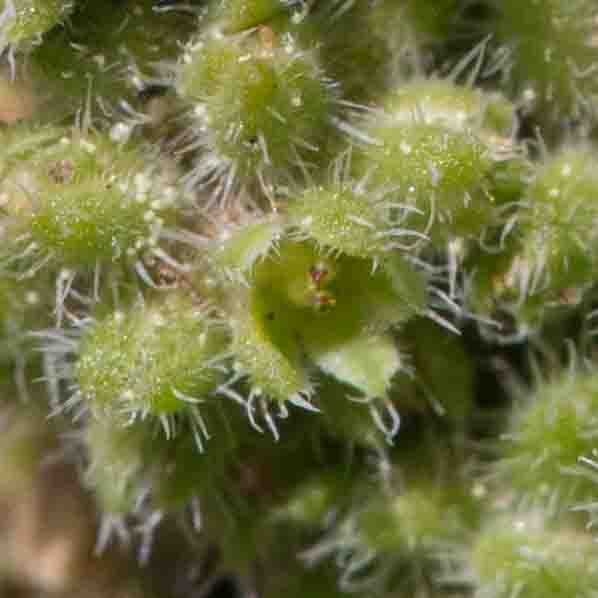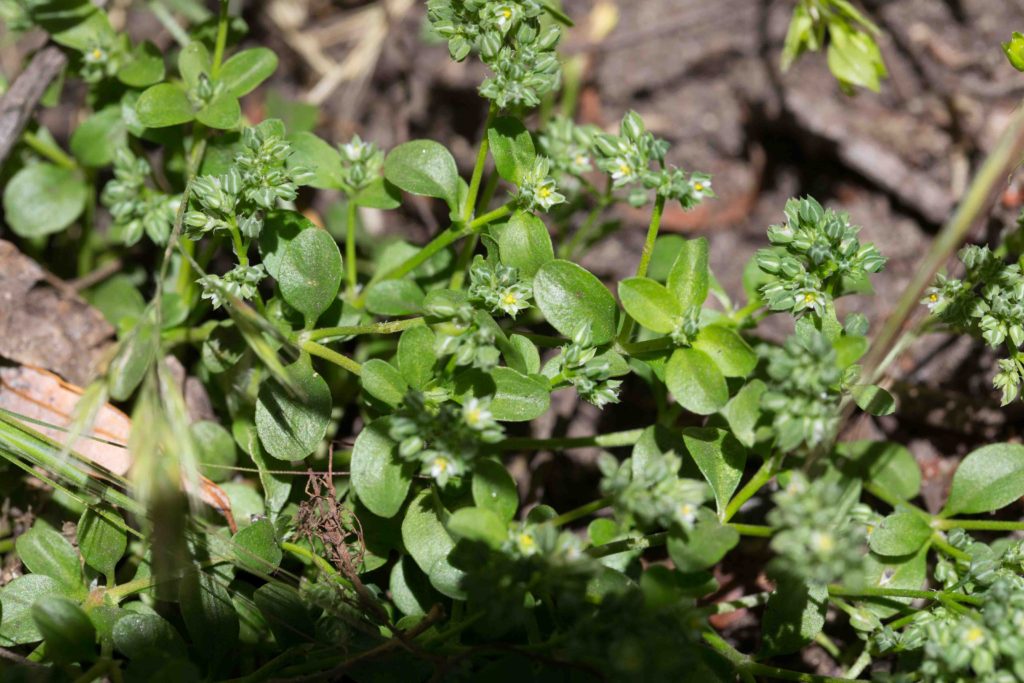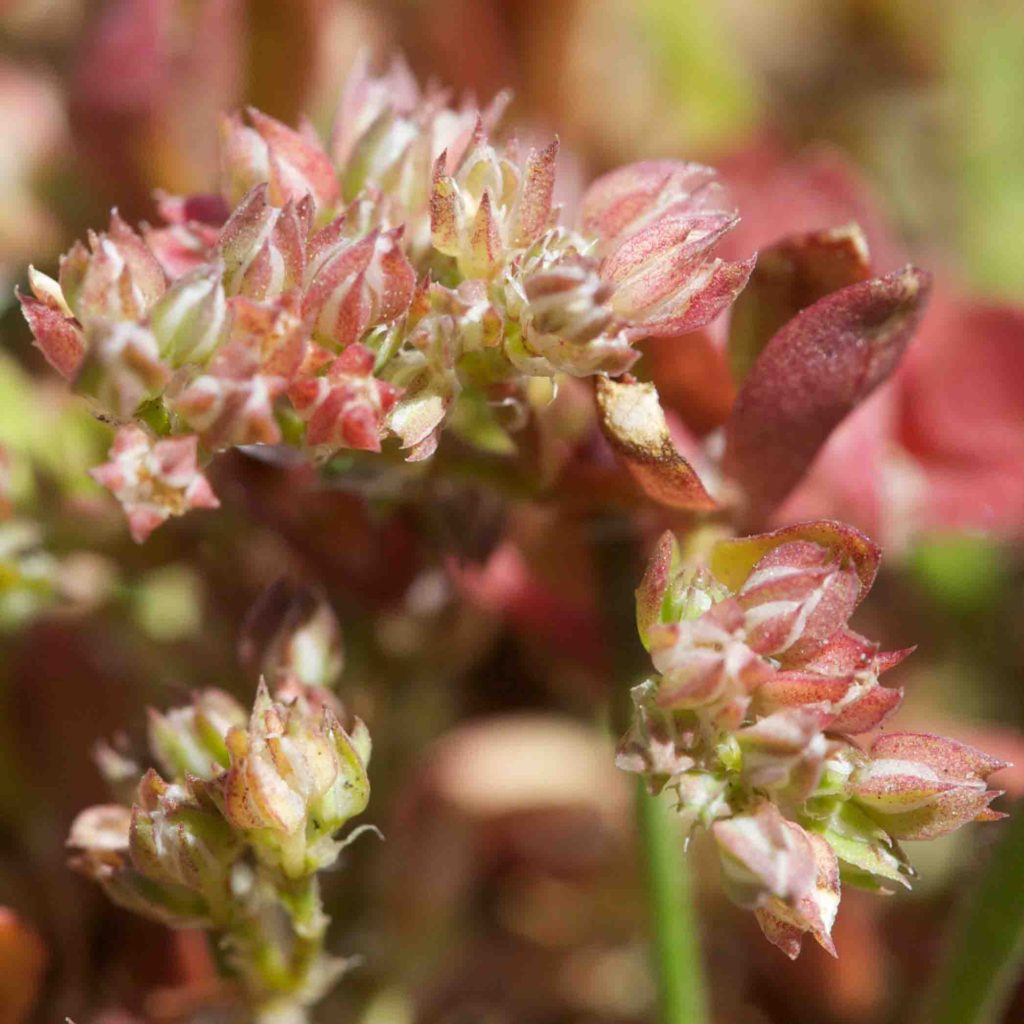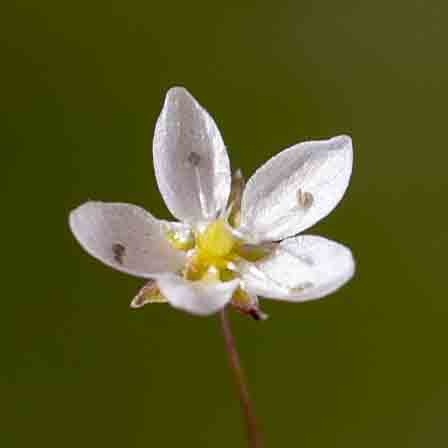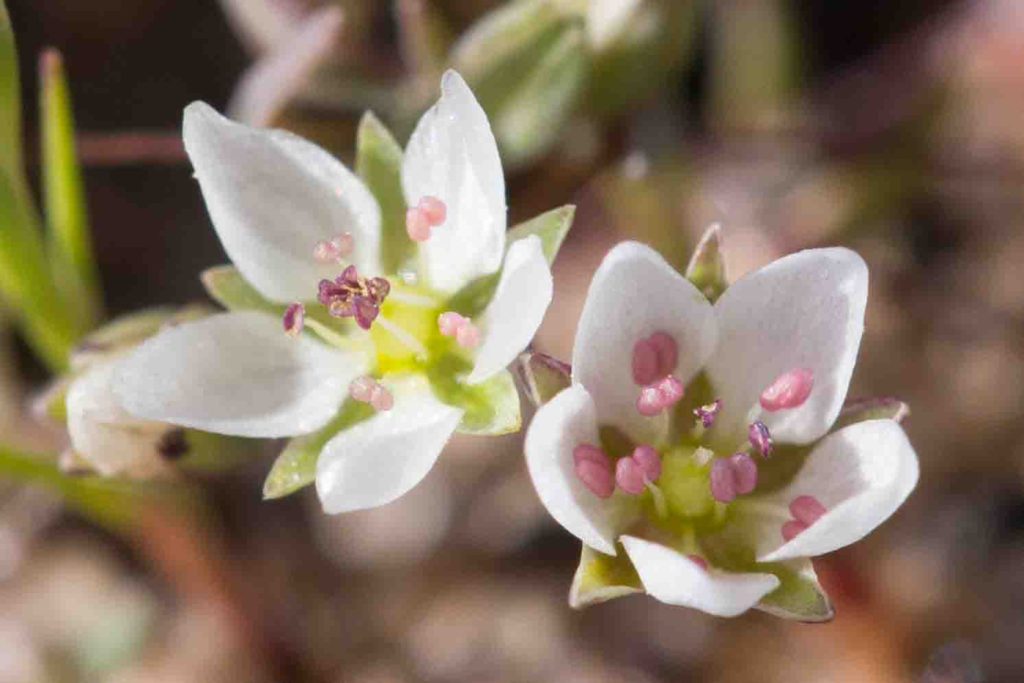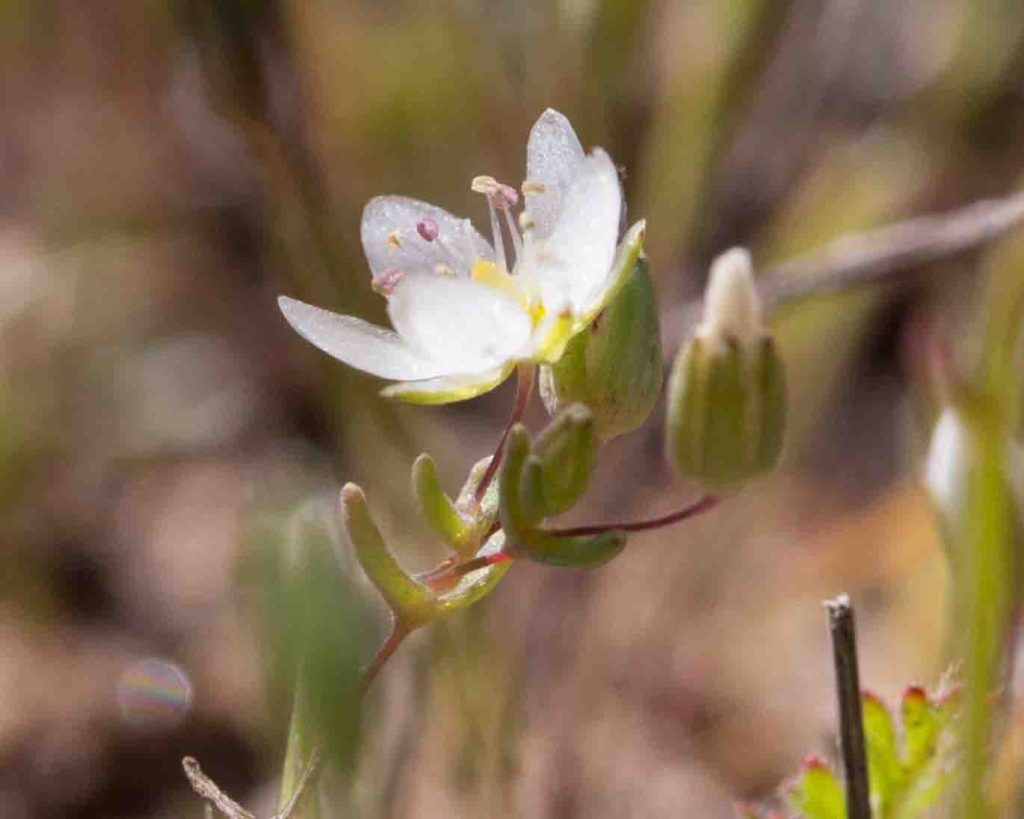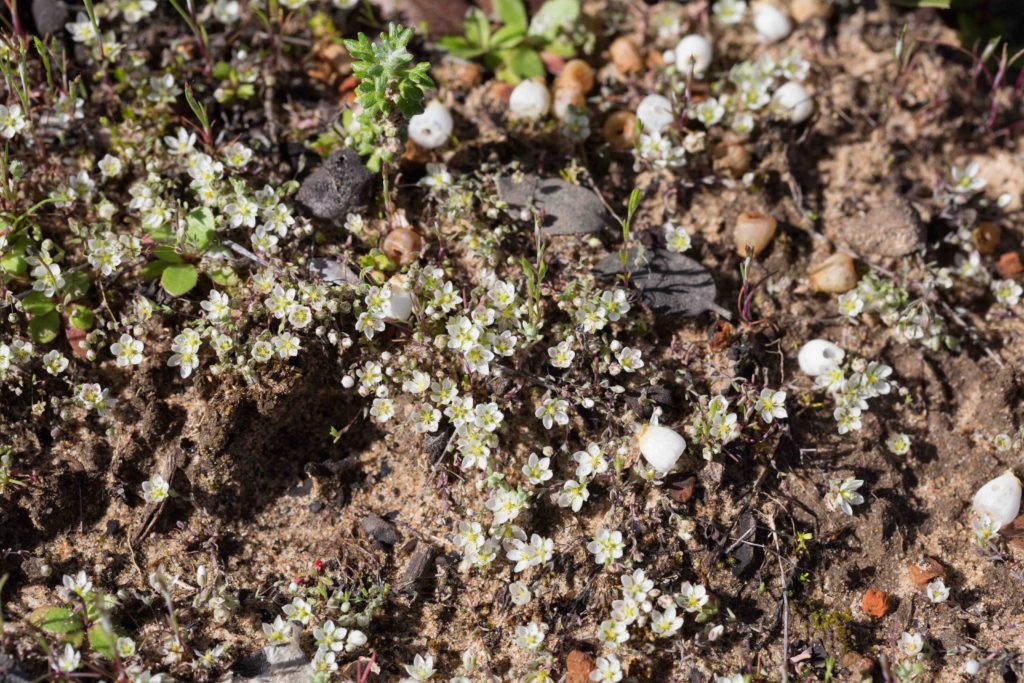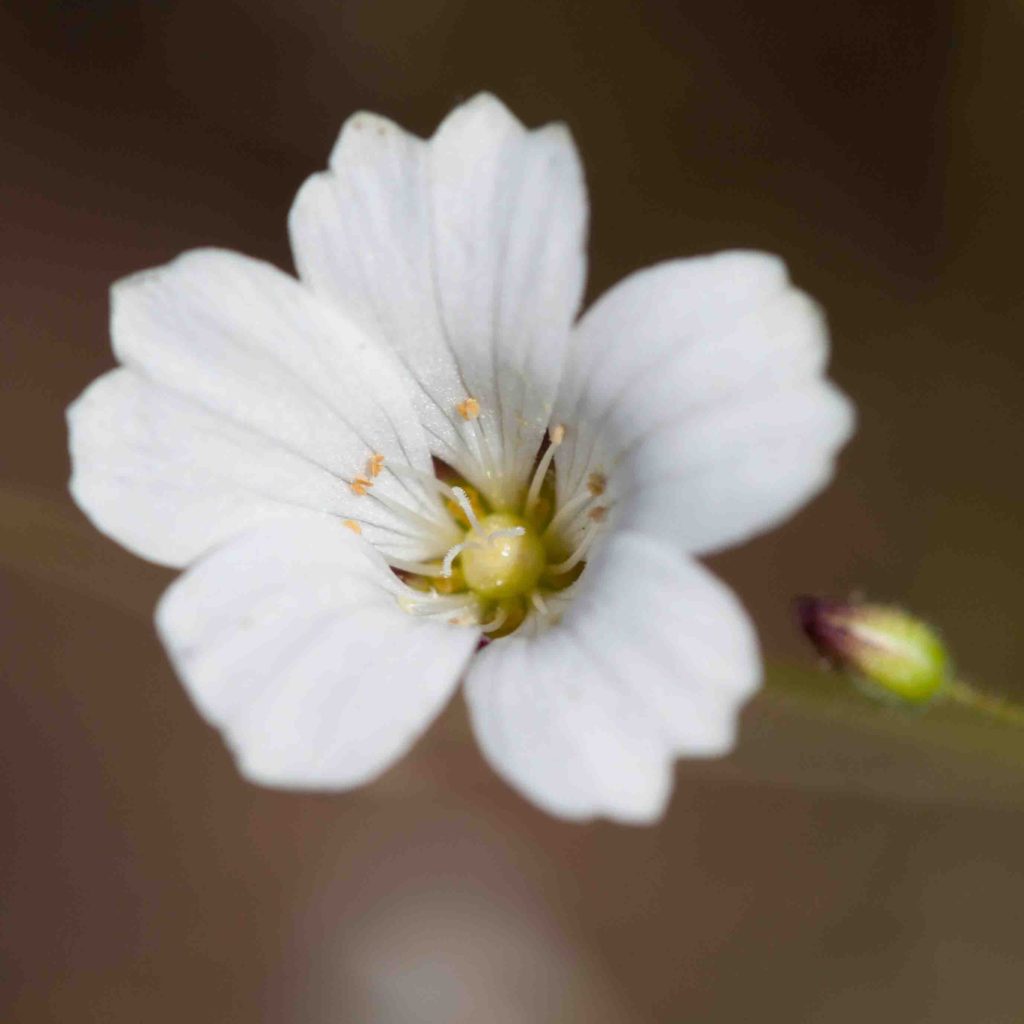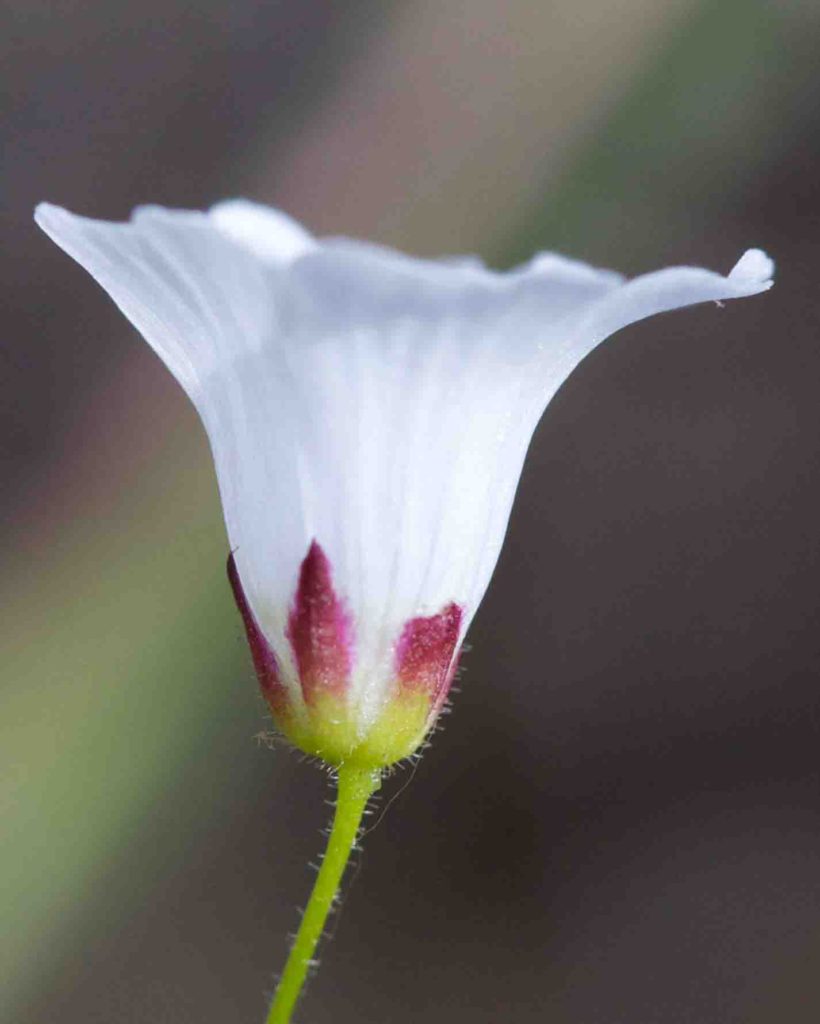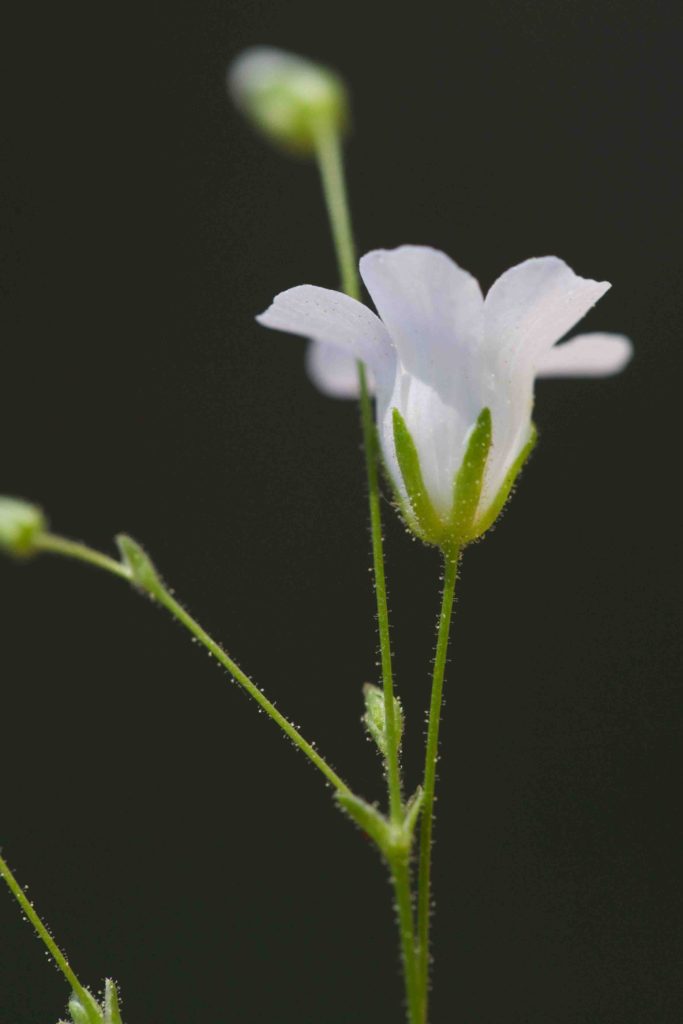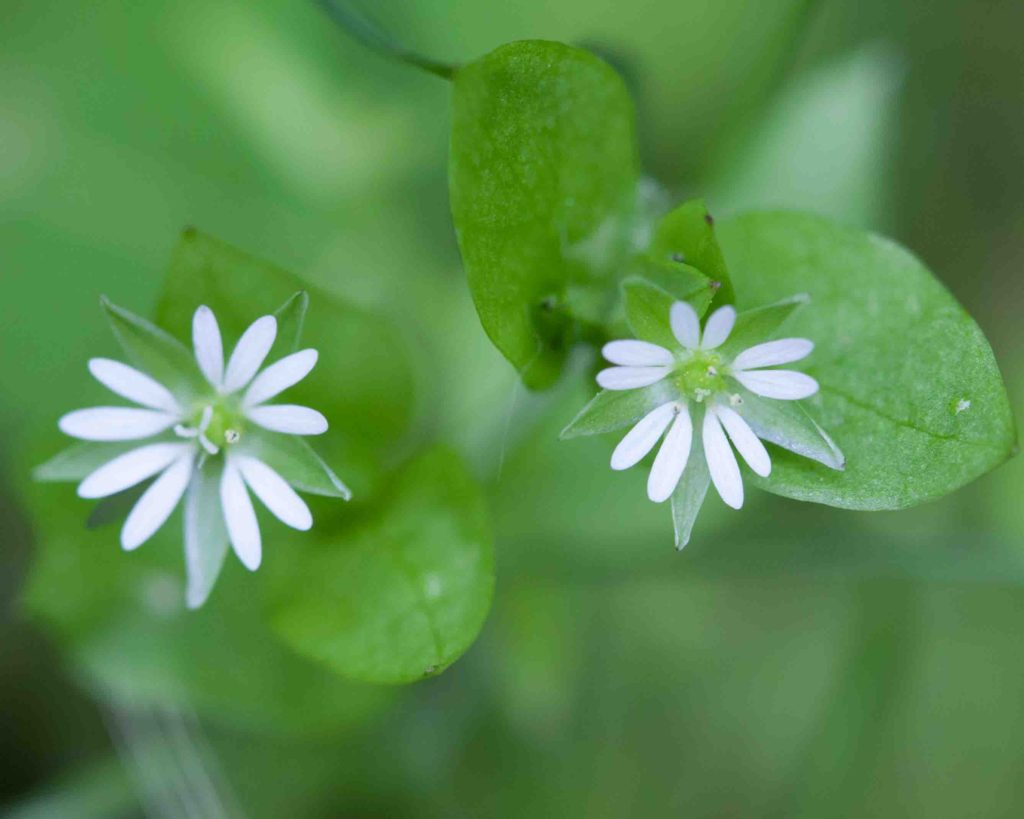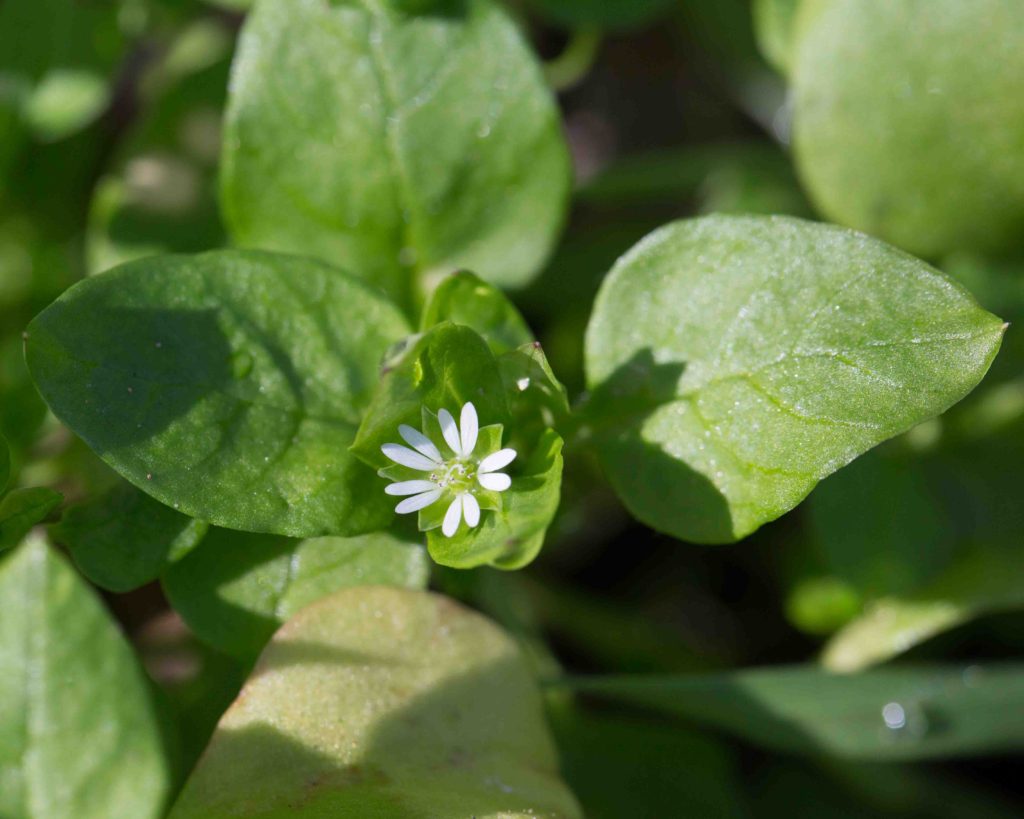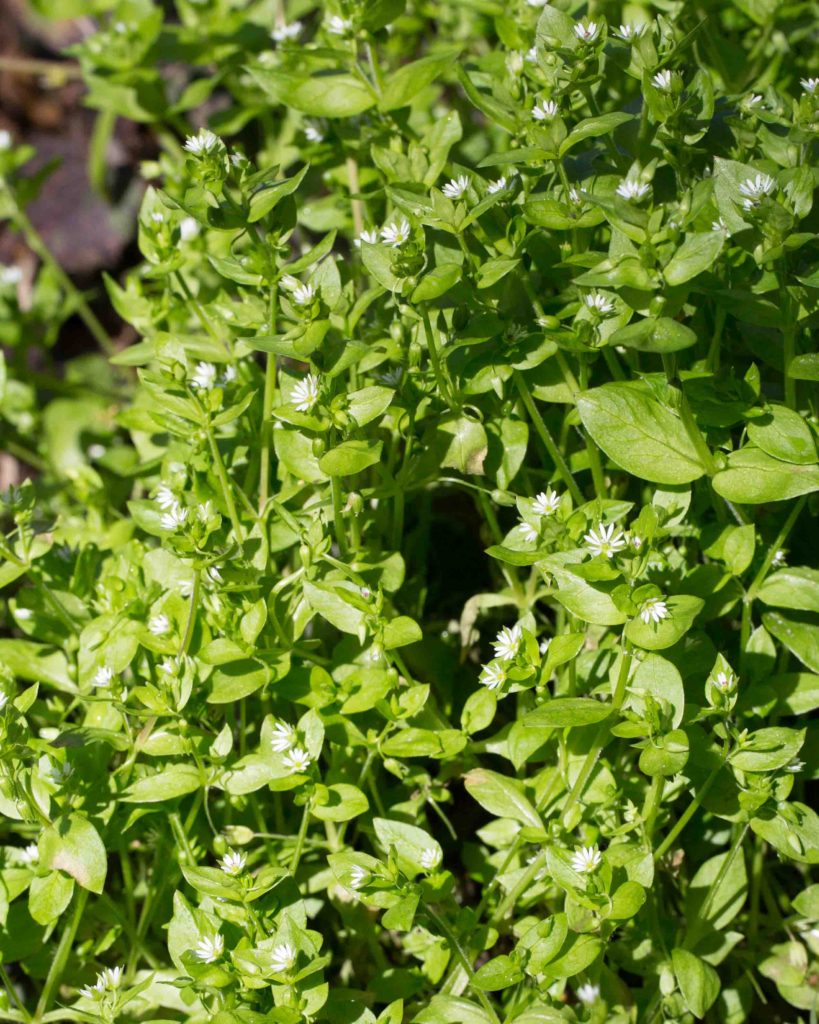Caryophyllaceae: Pink Family — Chickweeds, Sandwort et al
In the Pink family, leaves are generally opposite on swollen nodes. Most genera have smallish, regular, 5-petaled and 5-sepaled flowers. Silene (Catchfly or Campion) has larger, more striking flowers. A few genera, such Herniaria (Rupturewort) and Cardionema (Sandmat), have petal-like sepals, but lack true petals.
Sandmat – Cardionema ramosissimum
Blooms:
Apr–Aug
Plant Height:
5 cm
Flower Size:
Very small
Origin:
Native
Habitat:
Sandy places, beaches, trails, bluffs
Notes:
Very common, forming a prostrate mat on trails or other sandy areas. Leaves are awl-shaped and spine-tipped, prickly to the touch. Flowers are minute, with greenish, white-hairy sepals and tiny (< 0.5 mm) white, scale-like petals. A hand lens is almost required to see the flower at all, let alone its finer details.
Field Mouse-ear Chickweed – Cerastium arvense subsp. strictum
Blooms:
Mar–May
Plant Height:
5–20 cm
Flower Size:
Medium
Origin:
Native
Habitat:
Open grassy slopes
Notes:
This chickweed is easily distinguished from Common Chickweed (Stellaria media, see below) by its larger, more attractive flowers, and by the shallower lobes and prominent veins of its petals. It has both prostate non-flowering stems, and erect flowering stems. Leaves are 8–25 mm long, linear to lanceolate. Photos #2 and 4 by CJH.
Sticky Mouse-ear Chickweed – Cerastium glomeratum
Blooms:
Mar–June
Plant Height:
3–40 cm
Flower Size:
Small
Origin:
Europe
Habitat:
Disturbed areas, dry hillsides & grassland
Notes:
This has smaller, less-attractive flowers with much narrower petals than Field Mouse-ear Chickweed (Cerastium arvense, see above). Petal and sepal lengths are about equal. “Glomeratum” refers to the densely clustered flowers, and the stickiness is evident from the glandular inflorescence. Unlike Common Chickweed (Stellaria media, see below), the stems have hairs all around, rather than being confined to one side only. Photos #1-2 by CJH.
Rupturewort – Herniaria hirsuta subsp. cinerea
Blooms:
Apr–Sept
Plant Height:
Stems 5–20 cm
Flower Size:
Very small
Origin:
Eurasia
Habitat:
Sandy places
Notes:
This is another prostrate, mat-forming plant, densely hairy. It has pale green, ciliate leaves, oblong to oblanceolate, 3–12 mm long. The inflorescence has 3–8 minute (1–2 mm), petal-less flowers with green sepals.
Four-leaved Allseed / Polycarp – Polycarpon tetraphyllum var. tetraphyllum
Blooms:
May–Sept
Plant Height:
Stem 4–10 cm
Flower Size:
Very small
Origin:
Europe
Habitat:
Disturbed areas, roadsides
Notes:
Another prostrate plant which can form extensive mats. Leaves and flowers are green when young but pinkish when mature. The flower color comes from the lanceolate to ovate, awned sepals.
California Sandwort – Sabulina californica
Blooms:
Apr–June
Plant Height:
2–12 cm
Flower Size:
Small
Origin:
Native
Habitat:
Gravelly or sandy areas
Notes:
A beautiful little flower, not often seen but can appear in quantity. The plant is widely spreading to erect, simple or branched. Flowers are pure white, with tan or pink anthers. Leaves are 2–5 mm long and < 1.5 mm wide, linear to narrowly oblong. The white, bell-shaped flowers in the right hand photo have fallen from an overhanging manzanita; these give a sense of how tiny the flowers of this sandwort really are. The form with pink anthers is found on Fort Ord, and it has been suggested that this might be a separate variety, or even a separate species. Further study will be needed to decide whether this is in fact the case. Formerly known as Minuartia californica.
Douglas’ Sandwort – Sabulina douglasii
Blooms:
Apr–June
Plant Height:
4–30 cm
Flower Size:
Small
Origin:
Native
Habitat:
Dry, sandy places
Notes:
A charming little bell-shaped flower, borne on slender branching stems with petals that may be notched. Most of the thread-like leaves wither before flowering, though some remain visible towards the base of the stems. The sepals vary in appearance, sometimes red-tipped, sometimes a little narrower and without the red tip. The plant is consistently glandular-hairy, unlike the other Sabulina found in Monterey County. Formerly known as Minuartia douglasii.
Common Chickweed – Stellaria media
Blooms:
Feb–Sept
Plant Height:
7–50 cm
Flower Size:
Small
Origin:
Europe
Habitat:
Oak woodlands and meadows
Notes:
This low-growing chickweed is very common. It has small white flowers that seem to have 10 petals, but in fact there are five, deeply cleft almost to their base. Note that the hairs on the stem are found on just one side.

